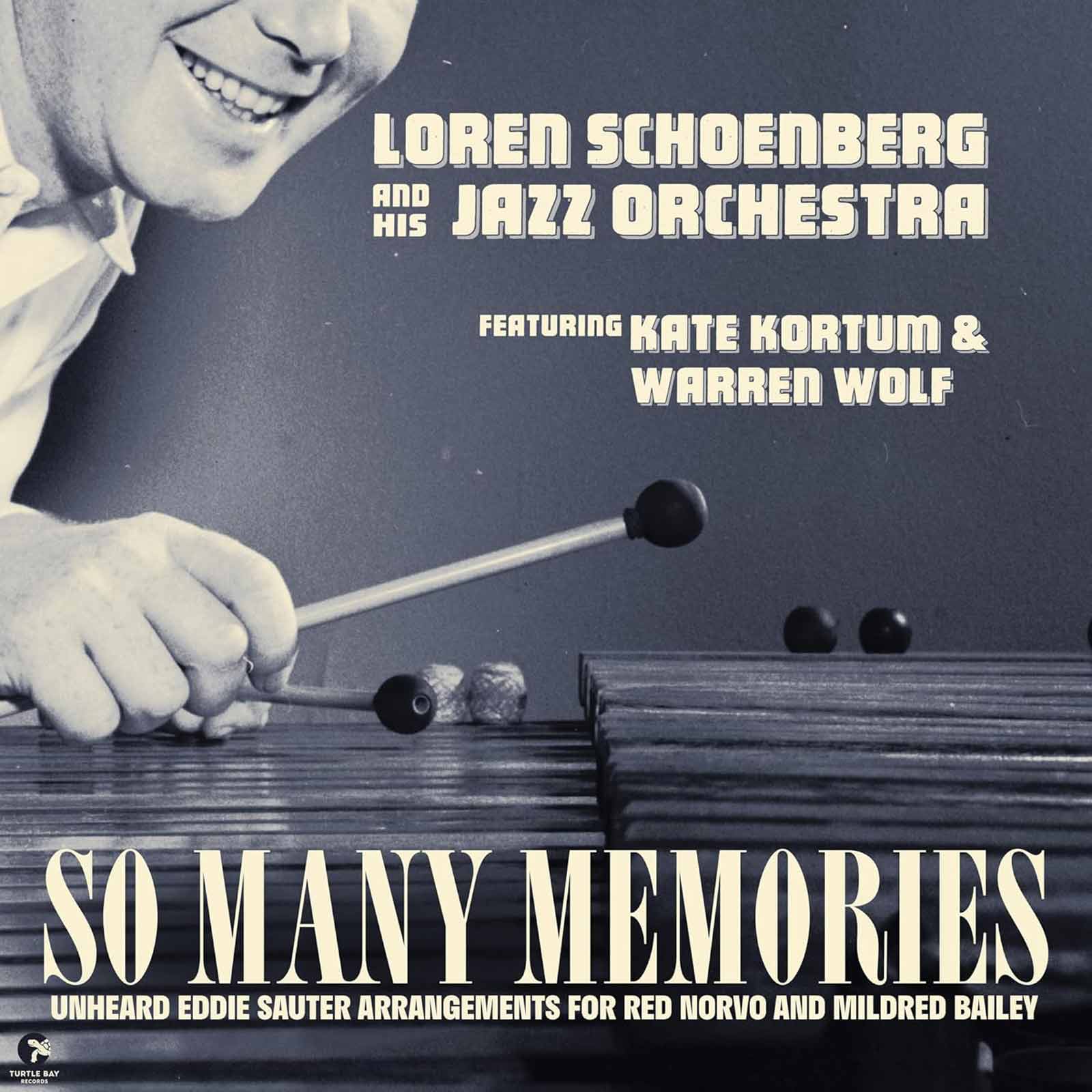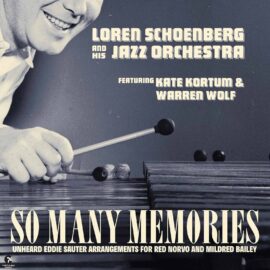| Jazz |

Echoes of Swing: Loren Schoenberg and the Resurrection of Eddie Sauter’s Lost Scores
In a rehearsal room at the Juilliard School, a handful of yellowed pages rest on music stands, their ink slightly faded by time. The handwriting belongs to Eddie Sauter, one of the most inventive arrangers of the Swing Era, and today, nearly a century later, history is breathing again through the horns of a new generation.
Here we are, squarely within the most exacting traditions of musical history. Loren Schoenberg, senior scholar at the National Jazz Museum in Harlem, stands as a rare figure at the intersection of scholarship, performance, and preservation. A longtime member of the Juilliard faculty, he has also taught at the Manhattan School of Music and the New School, and has lectured everywhere from the Metropolitan Museum of Art to the White House, from the New York Philharmonic to Stanford University and the Aspen Institute. His résumé reads like a living index of jazz institutions.
Over the years, Schoenberg has conducted the Jazz at Lincoln Center Orchestra, the Smithsonian Jazz Masterworks Orchestra, the American Jazz Orchestra, and Cologne’s WDR Jazz Orchestra. As a tenor saxophonist and pianist, he has performed and recorded alongside Benny Carter, Benny Goodman, Jimmy Heath, Eddie Durham, Marian McPartland, Clark Terry, John Lewis, Christian McBride, and Buck Clayton, a lineage that places him in the direct current of jazz history itself.
The act of resurrection
For Schoenberg, the musician, the scholar, the seeker, this latest project is more than a performance; it is an act of resurrection. He has brought back to life the long-lost arrangements Eddie Sauter wrote for vibraphonist Red Norvo, performed here by Juilliard students and guest artists.
These scores, written at the twilight of the Swing Era, were originally conceived for Red Norvo, a luminous yet often underappreciated figure in the evolution of jazz. Norvo, who passed away in 1999, was celebrated for the delicacy and transparency of his sound, an artist who turned the vibraphone into something more than a percussive novelty, giving it a lyrical voice all its own. His name still resonates in reference books and liner notes, his recordings quietly treasured by collectors and historians alike.
The fragile brightness of a pre-war sound
Between the late 1930s and the dawn of the 1940s, jazz arrangements began to shift in texture and color. America was emerging from the Great Depression and heading toward the storm of global war. In that brief window, the music acquired a buoyant, sometimes wistful joy, a kind of optimism tinged with fragility. Sauter’s work from that period embodies this paradox: complex harmonies framed in lightness, swing rhythms that shimmer with a sense of calm before the chaos.
By 1945, Red Norvo was a member of the Benny Goodman Sextet and collaborating with Charlie Parker and Dizzy Gillespie. Hearing these arrangements revived today, one is struck by their peculiar time-traveling quality: they sound both rooted in their era and startlingly modern. There’s a patina, a soft grain of sound, that feels anachronistic in the best possible way, a reminder that innovation can age beautifully.
An education in sound
For the students of Juilliard, this is not merely a performance exercise; it’s a masterclass in musical archaeology. These charts offer a chance to dissect the architecture of a bygone language, the subtle counterpoint, the tension between precision and swing, the way Sauter’s voicings allowed brass and reeds to shimmer without colliding. Schoenberg’s leadership ensures that the music is not embalmed but enlivened, that every measure speaks anew.
Schoenberg, ever the advocate for unearthing forgotten chapters of jazz history, has assembled a handpicked ensemble of Juilliard musicians and guest artists to breathe life into these rediscovered pages. The result is more than a tribute to Sauter’s craftsmanship or Norvo’s place in the pantheon; it is an exuberant celebration of continuity, proof that the vitality of jazz lies as much in rediscovery as in invention.
The warmth of the archive
There is, finally, an archival dimension to this endeavor, one that privileges texture, touch, and the intimacy of analog sound. In an age of pristine digital clarity, Schoenberg’s recording feels like an argument for imperfection. The music, he suggests, may reveal its deepest charm on vinyl rather than on compact disc.
The rounder, warmer tones of the LP format restore something essential to the listening experience: the slight crackle, the room’s air, the suggestion of presence. It’s as if the grooves themselves hold not just music but memory, the hum of a vanished world whose echoes still shimmer in every phrase.
History, freshly tuned
More than a nostalgic exercise, Schoenberg’s project reclaims the emotional and structural sophistication of pre-bop jazz. It reminds us that the Swing Era, often caricatured as carefree, carried within it both the exuberance and the anxieties of modernity. In resurrecting Eddie Sauter’s long-silent charts, Loren Schoenberg is not merely revisiting history, he’s reactivating it.
And as those brass harmonies bloom again in the halls of Juilliard, one senses a quiet triumph: that jazz, ever mutable, still has the power to make the past sound astonishingly alive.
Thierry De Clemensat
Member at Jazz Journalists Association
USA correspondent for Paris-Move and ABS magazine
Editor in chief – Bayou Blue Radio, Bayou Blue News
PARIS-MOVE, November 11th 2025
Follow PARIS-MOVE on X
::::::::::::::::::::::::
Musicians:
Loren Schoenberg – Piano
Kate Kortum – Vocal
Warren Wolf – Xylophone
Joe Boga – Trumpet
Summer Camargo – Trumpet
Anthony Hervey – Trumpet
Andre Perlman – Trombone
Nick Mesler – Trombone
Langston Hughes II – Saxophone
Adam Stein – Saxophone, Clarinet
Daniel Cohen – Saxophone, Clarinet
Julian Lee – Saxophone, Clarinet
James Zito – Guitar
John Murray – Bass
Matt Lee – Drums
Tracking List:
Azure
Nice Work If You Can Get It
You Go To My Head
I Know That You Know
Music, Maestro, Please
September In The Rain
So Many Memories
Two Sleepy People
I Can Dream, Can’t I?
I See Your Face Before Me
You Couldn’t Be Cuter
Old Folks
Roses In December
Exactly Like You
You’re Laughing At Me
After You’ve Gone
All Arrangements by Eddie Sauter. Originally made for Red Norvo and Mildred Bailey
Recording Engineer: Daniel Gengenbach
Mixing and Mastering engineer: Michael Perez-Cisneros
Producer: Loren Schoenberg
Executive Producer: Scott Asen
Package Designer: Elvira Broman
Cover image Courtesy of William P. Gottlieb/Ira and Leonore S. Gershwin Fund Collection, Music Division, Library of Congress

